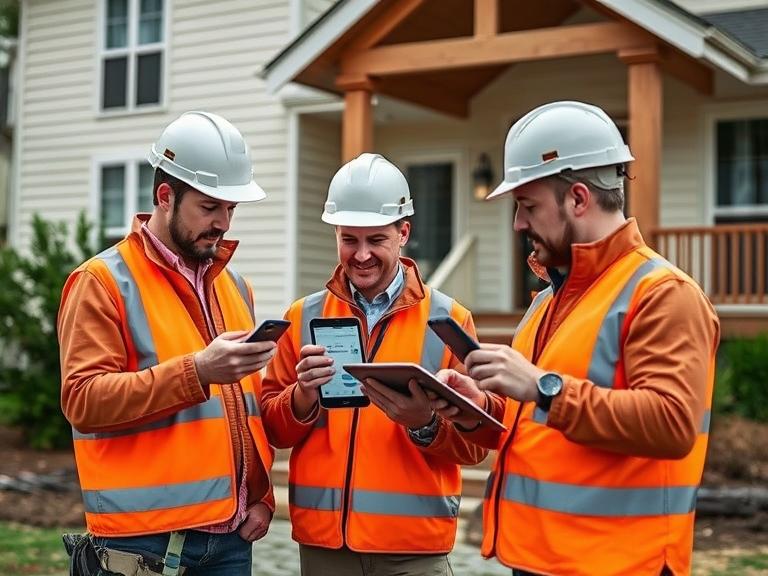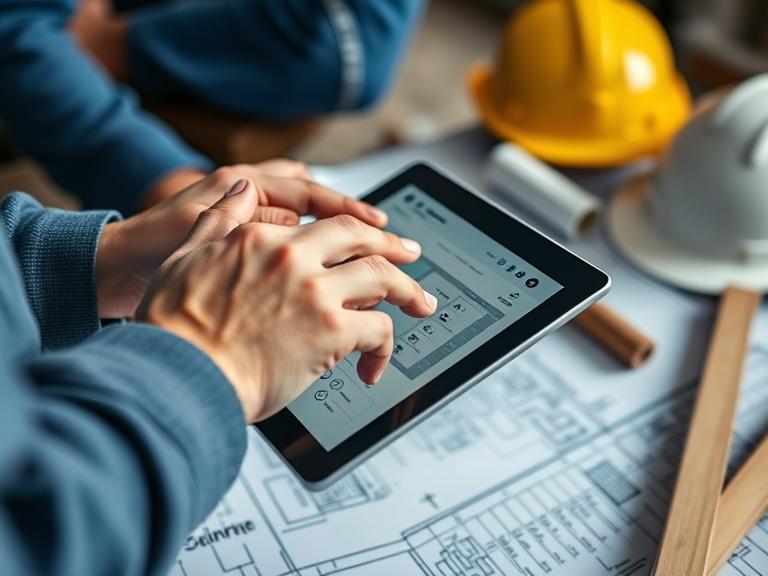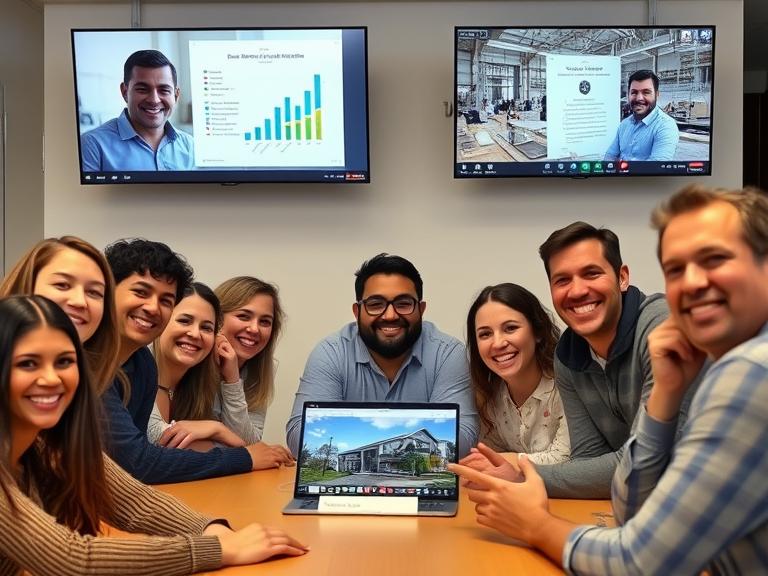Tucker Exteriors Hybrid Work Model for Smarter Teams
A compelling illustration of how contemporary businesses are utilising hybrid technology is the Tucker Exteriors hybrid work model. It redefines how teams work in the service and construction sectors by combining sustainability, productivity, and flexibility. Tucker Exteriors sets the standard for combining hybrid approaches with commercial requirements as companies look for efficient work arrangements after the epidemic.
Understanding the Tucker Exteriors Hybrid Work Model
Fundamentally, this hybrid work style blends remote collaboration with on-site work. Employees are not bound by strict office schedules. Rather, it allows teams to transition between digital coordination and field work, which enhances productivity and boosts employee happiness.
The objective is to develop a functional system that remains in line with organisational priorities while adjusting to real-world circumstances. Tucker Exteriors makes certain that workers are productive no matter where they are by using technology and smart planning.

How Hybrid Technology Powers the Tucker Exteriors Hybrid Work Model
Tucker Exteriors is able to connect field and office operations with hybrid technologies. Parties involved are kept informed through digital documents, mobile management apps, and cloud-based systems.
Site managers can upload data straight to shared systems when they have access to the cloud. Remote team members can use mobile devices to handle tasks, give updates, and access files in real time. Delays and misunderstandings are significantly decreased by these minor improvements.
Tucker Exteriors’ hybrid work approach is successful because hybrid technology is used as a foundational framework..
Hybrid Work Model 2021: Foundation of a Shift
Tucker Exteriors started reorganising its processes in 2021 with the hybrid work model. Due to both necessity and ingenuity, that year saw a dramatic change.
Many organisations have been exploring alternate work arrangements as a result of COVID-19. Tucker Exteriors, however, took things a step further. They developed a complete hybrid approach specifically suited to the demands of the construction sector, rather than merely embracing distant employment. It was not a short-term solution. It served as the cornerstone for long-term change.
Project Efficiency Increased by the Hybrid Work Setup
The efficiency of the project was directly impacted by the transition to hybrid workflows. Site teams used more efficient reporting methods to decrease downtime. Project managers were able to make choices more quickly because they had quicker access to updates.
Meetings in person took up less time. Teams instead used virtual coordination to share progress and align tasks. Video collaboration even improved design reviews and inspections.
The Tucker Exteriors hybrid work model’s strength was its ability to strike a balance between virtual efficiency and physical presence.
Employee Retention Benefits of Hybrid Work
A significant increase in employee happiness was one of the model’s unanticipated benefits. Burnout was lessened by flexibility. Schedules for skilled workers were more flexible. This aided in long-term retention as well as recruitment.
Work-life balance evolved from a catchphrase to an organisational focus. Fieldwork might be managed by staff members without compromising their personal time. These adjustments frequently result in higher team morale and improved performance.
Adopting the Tucker Exteriors Hybrid Work Model PDF Resource
In order to help others comprehend and maybe implement their concept, Tucker Exteriors made their internal materials available to the public. The Tucker Exteriors hybrid work model PDF is one example of such a document. This site describes the company’s technology, scheduling methods, and rules.
El texto muestra cómo los equipos utilizan herramientas digitales como programas de CRM, seguimiento de tiempo por GPS y cursos de formación en línea en sus tareas diarias. También incluye protocolos para la comunicación con los clientes, la gestión del trabajo y los requisitos de salud y seguridad en el PDF.
It is a useful guide for businesses looking to adopt a similar strategy.

Infrastructure Upgrades to Support the Hybrid System
The company’s infrastructure has to be upgraded in order to implement the hybrid model. Tucker Exteriors made investments in mobile devices for essential people, dependable software tools, and server security. For speed and clarity, every facet of communication was revamped.
These modifications enabled cloud-based file management, virtual client consultations, and remote site monitoring. Teams kept their functional unity even when they were spread out across several locations.
Challenges Faced During Implementation
Making the switch to a hybrid approach wasn’t without its difficulties. It necessitated changes in teamwork, process design, and philosophy. Device compatibility, time-zone planning, and digital competence gaps were early obstacles.
Tucker Exteriors, on the other hand, responded with process improvements, software testing, and internal training. They gradually removed the majority of barriers and created a scalable approach that could change as the company expanded.
Future of Hybrid Technology in Field Services
Tucker’s model’s success suggests further significant shifts in the building and service industries. Hybrid technology is no longer an optional element but rather a fundamental necessity. Companies understand that in order to remain efficient and competitive, they must adapt.
AI-powered planning tools, improved digital twins, or Internet of Things sensors for real-time project insights could all be part of future improvements. In an effort to keep ahead of the curve, Tucker Exteriors is already investigating these options.
Client Communication Enhanced by Hybrid Tools
Client communication is one of this model’s main advantages. Consumers benefit from improved scheduling options, quicker updates, and more understandable status reports. The digital interface makes interactions easier, whether it’s for a remodelling project or a roofing check.
Maintaining client satisfaction and trust is made simpler via remote consultations, document sharing, and virtual walkthroughs. This improves service delivery and enhances the company’s professional image.
Cost-Effectiveness of the Tucker Exteriors Hybrid Work Model
Financially speaking, hybrid work has assisted in cost containment. Rent, utilities, and commuting assistance costs have gone down as fewer workers are confined to permanent office locations.
More significantly, fewer mistakes and delays result in more profitable projects. Workers in flexible, goal-oriented settings typically accomplish goals more quickly and with fewer errors.
This cost-effectiveness contributes to Tucker Exteriors’ hybrid work model’s long-term viability.
Productivity Tools That Make the Hybrid Model Work
To support the model, Tucker Exteriors adopted a range of digital tools. These include:
- Platforms for mobile project management
- Systems for monitoring and reporting time
- Cloud-based document storage
- Tools for communication such as Zoom and Slack
- Portals for customers that are secure
These tools replace the need for in-person check-ins or paper-based filing systems. Teams can work smarter, not harder, without losing accountability.
A Model That Inspires Industry-Wide Change
Tucker Exteriors’ success encourages other field-based businesses to reevaluate antiquated employment patterns. If a company focused on construction can successfully use hybrid work, other sectors may follow suit.
This hybrid work approach demonstrates that control does not have to be sacrificed for flexibility. It involves developing more intelligent, flexible workflows that benefit both individuals and projects.

Conclusion: Why the Tucker Exteriors Hybrid Work Model Matters
The Tucker Exteriors hybrid work paradigm reflects a new way of thinking about corporate operations in the hybrid technology age, which goes beyond simply changing how people work. It establishes a strong benchmark for businesses navigating the workplace of the future with its emphasis on adaptability, digital integration, and real-time responsiveness.
There isn’t a trend. It is a tried-and-true, expandable framework that improves employee satisfaction and business performance.


Post Comment